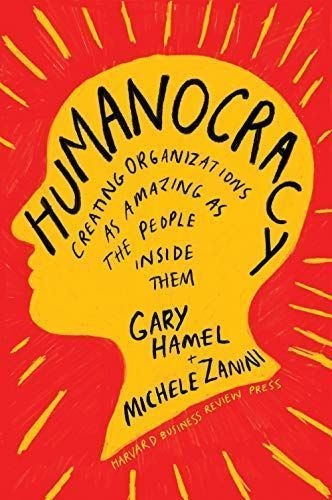
Humanocracy Creating Organizations as Amazing as the People Inside Them
In a world of unrelenting change and unprecedented challenges, we need organizations that are resilient and daring. Unfortunately, most organizations, overburdened by bureaucracy, are sluggish and timid. In the age of upheaval, top-down power structures and rule-choked management systems are a liability. They crush creativity and stifle initiative. As leaders, employees, investors, and citizens, we deserve better. We need organizations that are bold, entrepreneurial, and as nimble as change itself. Hence this book. In Humanocracy, Gary Hamel and Michele Zanini make a passionate, data-driven argument for excising bureaucracy and replacing it with something better. Drawing on more than a decade of research and packed with practical examples, Humanocracy lays out a detailed blueprint for creating organizations that are as inspired and ingenious as the human beings inside them. Critical building blocks include: Motivation: Rallying colleagues to the challenge of busting bureaucracy Models: Leveraging the experience of organizations that have profitably challenged the bureaucratic status quo Mindsets: Escaping the industrial age thinking that frustrates progress Mobilization: Activating a pro-change coalition to hack outmoded management systems and processes Migration: Embedding the principles of humanocracy—ownership, markets, meritocracy, community, openness, experimentation, and paradox—in your organization's DNA If you've finally run out of patience with bureaucratic bullshit . . . If you want to build an organization that can outrun change . . . If you're committed to giving every team member the chance to learn, grow, and contribute . . . . . . then this book's for you. Whatever your role or title, Humanocracy will show you how to launch an unstoppable movement to equip and empower everyone in your organization to be their best and to do their best. The ultimate prize: an organization that's fit for the future and fit for human beings.
Highlights
Sugar Perez Alcain@sugiedoo
Page 105
Sugar Perez Alcain@sugiedoo
Page 62
Sugar Perez Alcain@sugiedoo
Page 54
Sugar Perez Alcain@sugiedoo
Page 49
Sugar Perez Alcain@sugiedoo
Page 49
Sugar Perez Alcain@sugiedoo
Page 37
Sugar Perez Alcain@sugiedoo
Page 17
Sugar Perez Alcain@sugiedoo
Page 17
Sugar Perez Alcain@sugiedoo
Sugar Perez Alcain@sugiedoo
Sugar Perez Alcain@sugiedoo